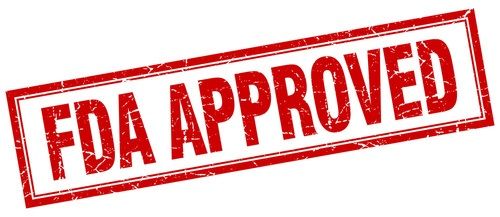FDA Approves Brodalumab for Plaque Psoriasis
The FDA has approved brodalumab for moderate-to-severe plaque psoriasis in patients who are eligible for systemic therapy or phototherapy and who have failed to respond or stopped responding to other systemic therapies.

The US Food and Drug Administration (FDA) has approved brodalumab (Siliq) for moderate-to-severe plaque psoriasis in patients who are eligible for systemic therapy or phototherapy and who have failed to respond or stopped responding to other systemic therapies.
The approval was based on findings from three randomized trials that explored brodalumab across 4373 patients with moderate-to-severe plaque psoriasis. In the trials, brodalumab was explored at a 210 mg and 140 mg dose compared with either placebo or ustekinumab. In the 210-mg arm, 83.3% to 85.1% of patients had at least a 75% improvement from baseline in the Psoriasis Area and Severity Index (PASI 75) at 12 weeks.
The treatment was approved with a Boxed Warning and a Risk Evaluation and Mitigation Strategy (REMS) to address the risk of suicidal ideation and behavior that was observed in clinical trials. Given this tendency, the FDA recommended against prescribing the interleukin-17 inhibitor to patients with a history of suicidality or depression.
"Moderate-to-severe plaque psoriasis can cause significant skin irritation and discomfort for patients, and today’s approval provides patients with another treatment option for their psoriasis," said Julie Beitz, MD, director of the Office of Drug Evaluation III in the FDA’s Center for Drug Evaluation and Research. "Patients and their health care providers should discuss the benefits and risks of Siliq before considering treatment."
The three studies that were instrumental in the approval were AMAGINE-1 (n = 661), AMAGINE-2 (n = 1831), and AMAGINE-3 (n = 1881). Treatment with brodalumab was given as a subcutaneous injection on day one during weeks one, two, four, six, eight, and 10. Across trials at baseline, most patients had psoriasis for approximately 20 years and nearly one-fifth had psoriatic arthritis. In AMAGINE-2 and -3 approximately 75% of patients had received prior systemic therapy or phototherapy. In AMAGINE-1, prior therapy consisted of biologic therapy (~45%).
In AMAGINE-1 the PASI 75 rate at 12 weeks with the 210-mg dose was 83.3% compared with 60.3% with the 140-mg dose. This was compared with a PASI 75 rate of 2.7% for placebo (brodalumab versus placebo, P <.001). A 100% improvement (PASI 100) was experienced by 41.9% with the 210-mg dose and for 23.3% of those treated with brodalumab at 140 mg, as compared with 0.5% with placebo.
For the AMAGINE-2 trial, the PASI 75 was 86.3% and 66.6% for the 210 mg and 140 mg dose of brodalumab, respectively, versus 8.1% in the placebo arm. Patients treated with ustekinumab at 45 mg or 90 mg had a PASI 75 of 70%. The PASI 100 rates were 44.4%, 25.7%, 0.6%, and 21.7% in the brodalumab 210 mg, 140 mg, placebo, and ustekinumab arms, respectively.
Similar findings were seen in the AMAGINE-3 study. The PASI 75 rates were 85.1%, 69.2%, 6%, and 69.3% in the brodalumab 210 mg, 140 mg, placebo, and ustekinumab arms, respectively. The PASI 100 rates were 36.7%, 27%, 0.3%, and 18.5%, respectively.
The most common adverse events with brodalumab across the trials were arthralgia, headache, fatigue, diarrhea, oropharyngeal pain, nausea, myalgia, injection site reactions, influenza, neutropenia, and tinea infections.
Depression was observed in 0.3% to 0.7% of patients taking brodalumab. Suicidal thoughts were observed in those receiving brodalumab, with suicide attempts noted primarily after 12 weeks during the 52-week assessment. There were two reports of completed suicide in the AMAGINE-2 trial.
In addition to the REMS, to address the risk of suicidal ideation and behavior, brodalumab was approved along with a medication guide for patients. The guide also addresses the increased risk for infection associated with the drug.